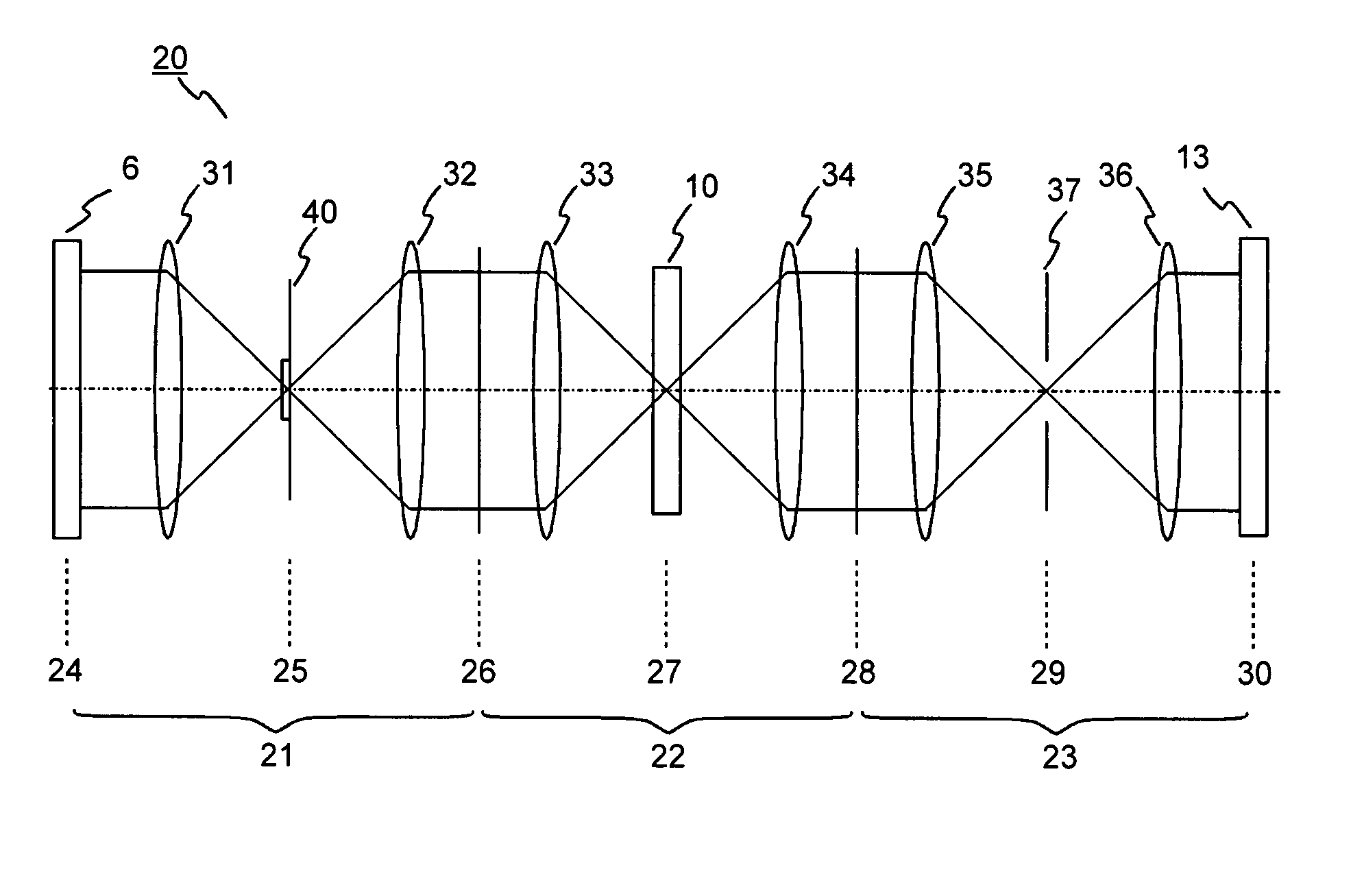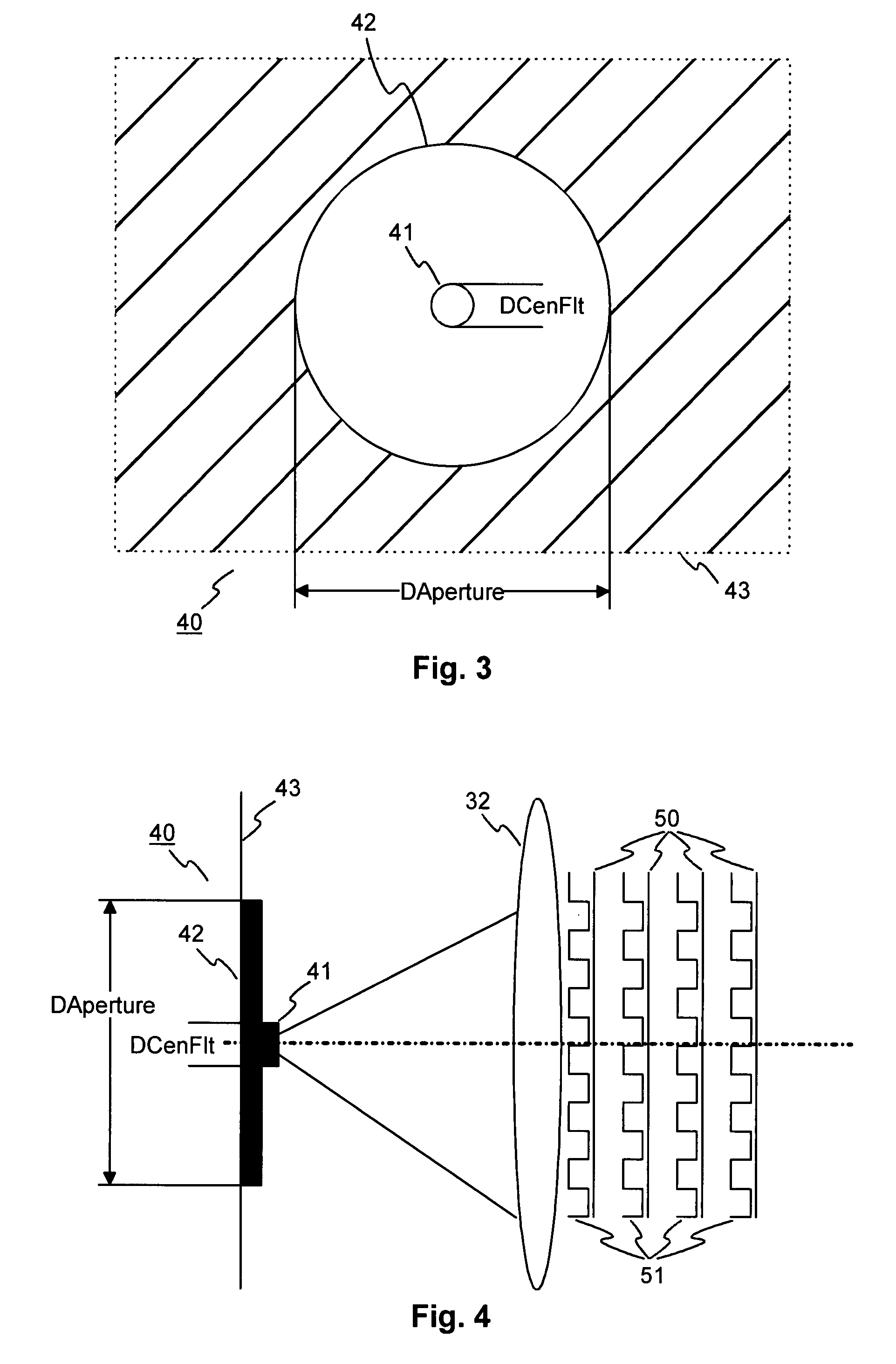Holographic storage system based on common path interferometry
a storage system and common path technology, applied in the field can solve the problems of reducing the writing data rate, wasting blocked light, and not being able to solve the problem of holographic storage systems using highly multiplexed holograms, so as to improve light efficiency and reduce required tolerances , the effect of increasing the data transfer ra
- Summary
- Abstract
- Description
- Claims
- Application Information
AI Technical Summary
Benefits of technology
Problems solved by technology
Method used
Image
Examples
Embodiment Construction
[0031]In holographic data storage digital data are stored by recording the interference pattern produced by the superposition of two coherent laser beams. A general exemplary setup of a 3×4f (12f) holographic storage system is shown in FIG. 1. A source of coherent light, e.g. a laser diode 2, emits a light beam 3, which is collimated by a collimating lens 4. The light beam 3 is then divided into two separate light beams 7, 8. In the example the division of the light beam 3 is achieved using a first beam splitter 5. However, it is likewise possible to use other optical components for this purpose. A phase spatial light modulator (SLM) 6 modulates one of the two beams, the so called ‘object beam’7, to imprint a 2-dimensional phase data pattern. The path of the second beam, the so called ‘reference beam’8, is omitted in the figure for simplicity. The object beam 7 is Fourier transformed by a Fourier objective lens 31. Located in the Fourier plane of the Fourier objective lens 31 is a p...
PUM
| Property | Measurement | Unit |
|---|---|---|
| diameter | aaaaa | aaaaa |
| diameter | aaaaa | aaaaa |
| phase | aaaaa | aaaaa |
Abstract
Description
Claims
Application Information
 Login to View More
Login to View More - R&D
- Intellectual Property
- Life Sciences
- Materials
- Tech Scout
- Unparalleled Data Quality
- Higher Quality Content
- 60% Fewer Hallucinations
Browse by: Latest US Patents, China's latest patents, Technical Efficacy Thesaurus, Application Domain, Technology Topic, Popular Technical Reports.
© 2025 PatSnap. All rights reserved.Legal|Privacy policy|Modern Slavery Act Transparency Statement|Sitemap|About US| Contact US: help@patsnap.com



